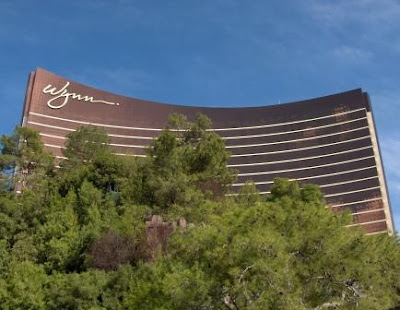 The background
The intent of hotel star ratings, AAA's diamond ratings, Michelin's Red Guide ratings and Mobil/Forbes' Stars is to provide a classification system for customers to evaluate the facilities and quality of accommodation they are considering. For example, a 1-star hotel would be considered basic, while a 5-star would be considered superior. See hotel rating differentiators below.
The background
The intent of hotel star ratings, AAA's diamond ratings, Michelin's Red Guide ratings and Mobil/Forbes' Stars is to provide a classification system for customers to evaluate the facilities and quality of accommodation they are considering. For example, a 1-star hotel would be considered basic, while a 5-star would be considered superior. See hotel rating differentiators below.
Anomalies Ever had the experience where you go to a resort in a developing nation and the facilities are not quite up to par with the 4-star rating you expected? That's because, contrary to popular thought, many countries have their own rating systems. For example, in Europe, each country (and sometimes city) tends to have its own rating system. To make matters more confusing, in addition to the country's governing body ratings, hotels are also rated by travel writers, travel websites and travelers on sites like Trip Advisor (see trip styler's reviews here). Since star ratings only go from 1 - 5, 7-star hotels like the Burj al Dubai or 7-Stars Galleria in Milan are thought to be self-rated.
Can you trust hotel star ratings? Generally yes. Especially when it pertains to big brands like Intercontinental, Hyatt, Starwood, Hilton and Fairmont. The challenge comes when considering one-off properties on foreign soil.
Hotel ratings explained 1-Star Rating - Usually a small hotel managed and operated by the owner. - Basic accommodations. - Services and transport options should be within walking distance. Criteria: abides by standards such as room size, window screens and coverings, clothes storage, linens, door lock, smoke detector, and parking facilities. (note, all Italicized text paraphrased from canadaselect.com)
2-Star Rating - Typically a chain that offers consistent quality and limited amenities. - Small or medium-sized rooms with a phone and TV. - No room service but should be a restaurant on-site. Criteria: exceeds the 1-star level in quality of mattress, bed linen, floors/window/wall coverings, and in provision of bedside and seating area lighting, additional room furniture, and parking space.
3-Star Rating - Often located near a major expressway, business center and/or shopping area. - Offers nice, spacious rooms and decorative lobbies. - On-site restaurants will offer breakfast, lunch and dinner. - Valet, room service, small fitness center and pool are often available. Criteria: these above-average properties will offer larger units with additional room furniture, coordinated furnishings, better quality mattresses and linens, and will be equipped with clock/alarm, extra amenities in washrooms.
4-Star Rating - Formal, large hotels, with multiple in-hotel services. - Nearby shopping, dining, entertainment. - Usually other same-caliber hotels clustered nearby. - Synonymous with above-average service, well appointed rooms, restaurants, room service, valet parking, fitness center and a concierge. Criteria: indicates exceptional quality in facilities and services. Offering superior quality throughout the property in areas of guestrooms, bath and common areas. The property typically provides laundry/valet service as well as many additional amenities.
5-Star Rating - A lux hotel with highest degree of personal service. - Rooms are equipped with quality linens, DVD, CD/iPod stereo, jacuzzi tub and in-room video. - Multiple restaurants on-site with extensive, gourmet menus, and room-service available 24-7. Fitness center, valet parking and concierge top off the experience. Criteria: offering outstanding facilities, guest services and amenities, a 5-star property is intended to impart a luxurious experience to a discerning international audience.
Tips - if worried, ask a hotel what governing body gave them their star rating - keep in mind that most hotel ratings systems rely heavily on facilities and service 'quantity' vs quality. For example, a three-star could have an incredible atmosphere and decor, but lacked the facilities to reach a 4-star rating. - remember, a 4-star rating doesn't always guarantee top-notch service